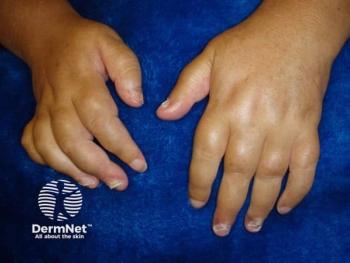
Tapinarof Selectivity and Mechanism of Action for PP Treatment
Tj Chao, MPAS, and Lauren Miller, MPAS, discuss tapinarof as a treatment for plaque psoriasis (PP).
Episodes in this series

Transcript
Lauren Miller, MPAS, PA-C: Let’s talk about FDA-approved tapinarof. It’s the first-in-class aryl hydrocarbon receptor agonist. You can use this in all severity types for patients with plaque psoriasis. You’ve used this. Do you feel the selectivity of tapinarof plays into its efficacy and safety, and do you think that’s a big deal?
TJ Chao, MPAS, PA-C: I do because it’s an agonist that drives normalcy of cells essentially. You see a change in the psoriasis that’s a little different from what you might have seen in the past with topical steroids.
Lauren Miller, MPAS, PA-C: Typically, when you stop using topical steroids, the disease comes back.
TJ Chao, MPAS, PA-C: Right. Going back to what we were talking about earlier, this is something that can be used anywhere on the body because there’s no atrophy of the skin or striae that can occur. You don’t have to worry about where you write [the prescription] for because it can go anywhere.
Lauren Miller, MPAS, PA-C: As a provider, I try every topical product before I prescribe it to the patient. I want to know what it feels like so I know what to expect. If I try something on my scalp and it’s greasy, then I’m going to understand that my women aren’t going to want to use this. I’ve felt the vehicle. It’s safe to use on any body part, so you can use it scalp to toes. But vehicle plays a huge role in whether a patient is going to be compliant with it.
TJ Chao, MPAS, PA-C: Right.
Lauren Miller, MPAS, PA-C: Where I [practice], I talk about how it’s often more beneficial for the patient to not have to do more than 1 product from a co-pay standpoint. This is a great option for those patients as well.
Transcript edited for clarity.
Newsletter
Like what you’re reading? Subscribe to Dermatology Times for weekly updates on therapies, innovations, and real-world practice tips.




































